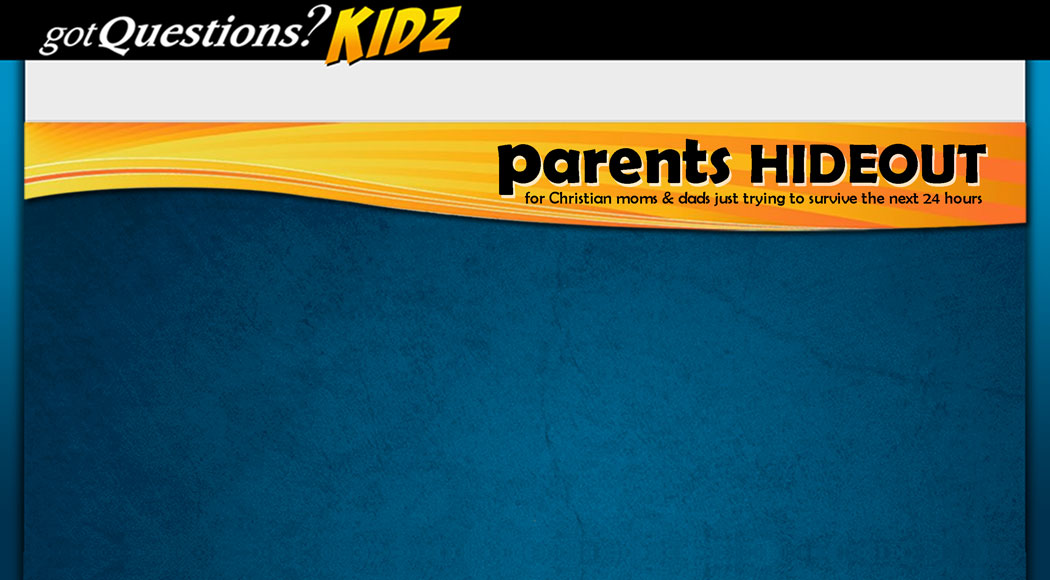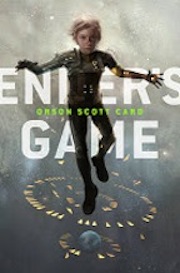
Ender's Game Book Review
by Rebekah Largent
 Parents are excited about all the recent young adult books that have gotten their kids and teens reading again. The Harry Potter series started the explosion, and kids of all ages have devoured books such as The Hunger Games trilogy and the Twilight series. As wonderful as it is that kids are reading more now, this trend has unfortunate dangers as children explore books that were actually meant for a much older audience. Ender’s Game by Orson Scott Card is one of these books.
Parents are excited about all the recent young adult books that have gotten their kids and teens reading again. The Harry Potter series started the explosion, and kids of all ages have devoured books such as The Hunger Games trilogy and the Twilight series. As wonderful as it is that kids are reading more now, this trend has unfortunate dangers as children explore books that were actually meant for a much older audience. Ender’s Game by Orson Scott Card is one of these books.
Although Ender’s Game was written in 1985, it remained popular for many years and will soon gain new momentum due to the movie release of the same name, scheduled to hit theaters November 1, 2013. The previews of the movie seem pretty tame, and one could easily draw the conclusion that it’s a film for the whole family, despite its recently announced PG-13 rating. Although it’s impossible to know much about the movie itself at this point, it’s important for Christian parents to know that Ender’s Game is actually not a book for kids—even though it was marketed to young adults for a time.
Ender’s Game takes place in a post-war universe. Mankind is recovering from a violent conflict with an alien race that nearly wiped out all of humanity 70 years earlier. The war was so horrendous that, even though the aliens (called “buggers” because of their insect-like appearance) were defeated, the government is taking extreme measures to ensure that, if the buggers return, Earth will neither suffer defeat nor endure such staggering losses a second time.
These measures lead to an inordinate amount of government control as citizens are subjected to a “two children only” policy, increased levels of security, and loss of privacy. In addition, young children are monitored 24/7 to see if they may be candidates for Battle School, a well-known space station where children are trained to become part of an army meant to defend Earth against the buggers. If children are deemed worthy, they are taken from their families to Battle School, where they will spend the remainder of their childhoods.
Thus we introduce Ender, the story’s main protagonist. Ender (a nickname derived from his given name, Andrew) Wiggin is a six-year-old boy who was born as a third child at the government’s whim. He has been monitored for years, and, because of Ender’s high intelligence, empathy, and problem-solving skills, the trainers at Battle School believe he is just the person they’ve been looking for to lead Earth to victory over the buggers.
Ender is unceremoniously taken from his family and flown to Battle School, where he is put through rigorous training and testing. Even though most of the children at Battle School essentially lose their childhood, the leaders in charge believe that Ender must be put through even more training, isolation, and mind games than the others in order to fully develop his leadership capacity. Many years of hardship and loneliness mold Ender into boy who is just a shadow of who he used to be. We wait for poor Ender to catch a break, but he never truly does.
While the book has an interesting story and a political undertone that would fascinate adults, there are many thematic elements that make this book unsuitable for children and young teenagers. Throughout this fairly lengthy novel, profanity is rampant. The kids in the book often use curse words and off-color language. There are over 60 instances of curse words and at least 2 occurrences of racial slurs; plus, the kids use milder, but still crude, language (e.g., turd, crap, etc.) more than 30 times.
Profanity aside, there is a troubling bent on the story's content. Heavy violence, blood, and gore are found throughout, most perpetrated by or against the kids. In addition, the way the children are trained is disturbing. They are taken from their families and subjected to military drills all day, every day. Even their “free” time is centered on preparing for war as the kids play various strategic and battle-themed video games. None of the students are allowed to see their families again until they are twelve years old, which results in at least a 6-year separation for most kids. In Ender’s case, however, he is to be deprived of even this small bright spot in favor of his unique training program.
There’s no denying that Orson Scott Card's Ender’s Game is well-written and imaginative; in addition, it contains some deep and thought-provoking political undertones and calls into question whether or not the ends truly justify the means. But it’s also a dark story, teetering on the very edge of hopelessness and despair. Perhaps a mature adult would find this veiled allegory deeply profound, but allegorical concepts of existentialism are well beyond the comprehension of a child.
Even though the story is captivating and engrossing, I would strongly argue that young kids and early teenagers are not the right audience for this book. Not only does the book present a story almost completely devoid of kindness and hope, it also paints a bleak picture of society suffering from the complete absence of a loving, caring God. It’s important for readers of a book of this nature to have a solid understanding of the nuances of symbolism and metaphors in storytelling. Readers should also possess a firm faith in God, His lovingkindness toward His creation, and His involvement in our daily lives.
If you choose to allow your child or teenager to read Ender’s Game, I urge you to participate in the process by reading the book first, discussing the premise, inviting questions, and providing wisdom along the way. In this manner, you can help your child as he or she navigates the many adult themes in Ender’s Game.
Rebekah Largent is a mom, a wife, and a writer/editor. After many years in the children's curriculum industry, she switched over to Internet ministry at Got Questions Ministries as a writer and editor. In addition to editing and writing articles for GotQuestions.org, she also manages the GQKidz.org website.
comments powered by Disqus
- Zootopia (Disney)
- Kung Fu Panda 3 (China Film/Dreamworks)
- Inside Out (Pixar)
- Jurassic World (Amblin and Legendary)
- Tomorrowland (Disney)
- Avengers: Age of Ultron (Marvel)
- Cinderella (Disney)
- The Hobbit: Battle of the Five Armies
(New Line Cinema) - Mockingjay - Part 1 (Lionsgate Films)
- Five Nights at Freddy's (Scott Cawthon)
- Big Hero 6 (Walt Disney Aninimation Studios)
- Dolphin Tale 2 (Alcon Entertainment)
- Girl to Girl by Sarah O'Leary Burningham
- The Boxtrolls (Laika Entertainment)
- The Jesus Storybook Bible by Sally
Lloyd-Jones - Guardians of the Galaxy (Marvel Studios)
- How to Train Your Dragon 2 (DreamWorks)
- Maleficent (Walt Disney Pictures)
- The Book of the King by Jerry B. Jenkins
and Chris Fabry - The Tale of Three Trees retold by Angela
Elwell Hunt - Muppets Most Wanted (Walt Disney
Studios) - City of Bones by Cassandra Clare
- The LEGO Movie (Warner Bros. Pictures)
- Saving Mr. Banks (Walt Disney Pictures)
- The Hobbit: The Desolation of Smaug
(WingNut Films) - Frozen (Walt Disney Studios)
- Hope for the Weary Mom: Where God
Meets You in Your Mess by Stacey Thacker
and Brooke McGlothlin - Christian Heroes: Then and Now by Janet
and Geoff Benge - Wonder by R.J. Palacio
- Disney Infinity (Disney Interactive)
- Ender's Game by Orson Scott Card
- Turbo (DreamWorks)
- Despicable Me vs. Monsters University
- Epic (Blue Sky Studios)



